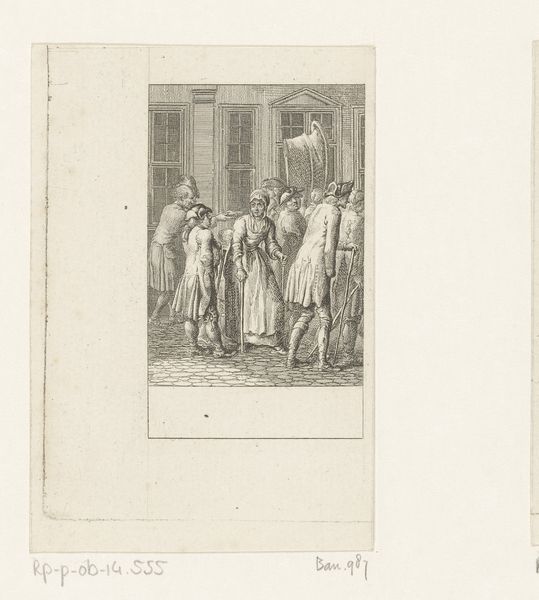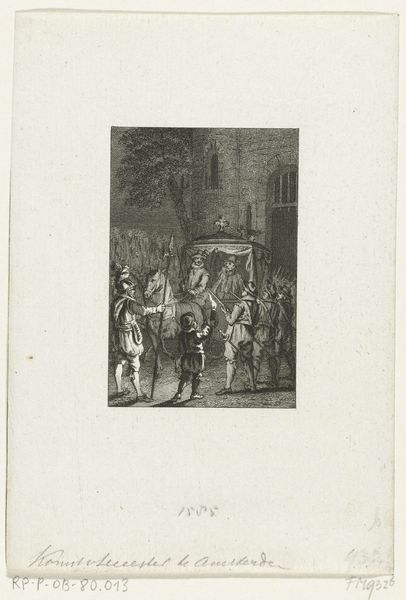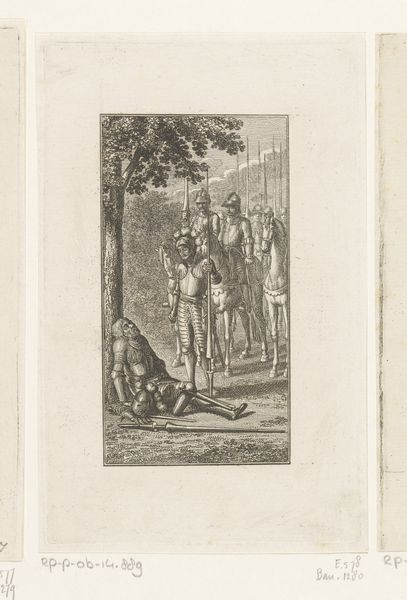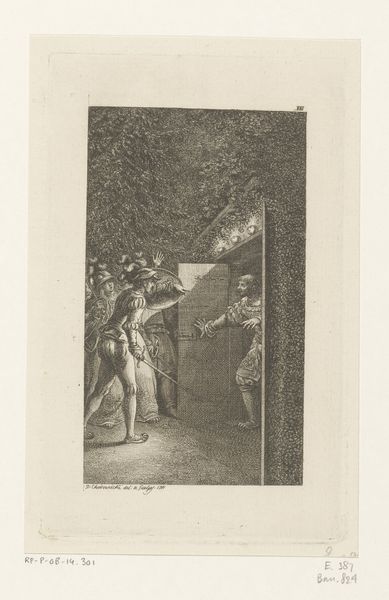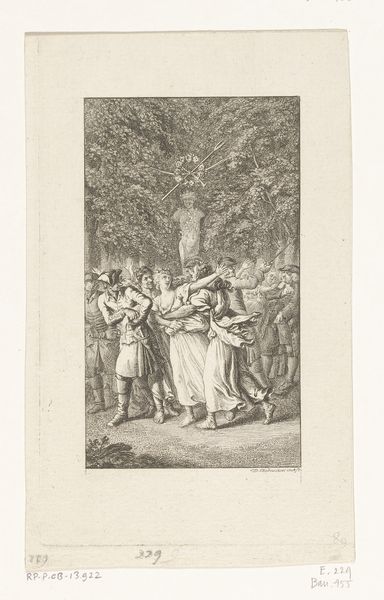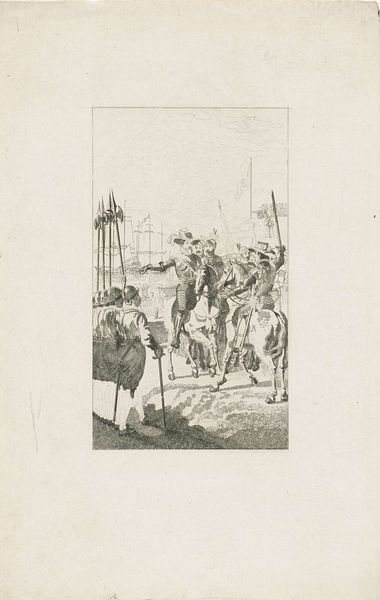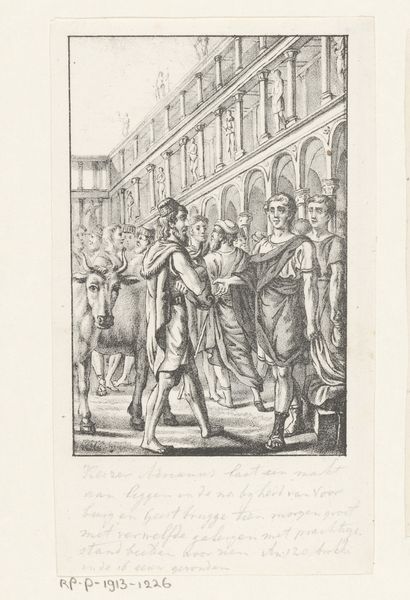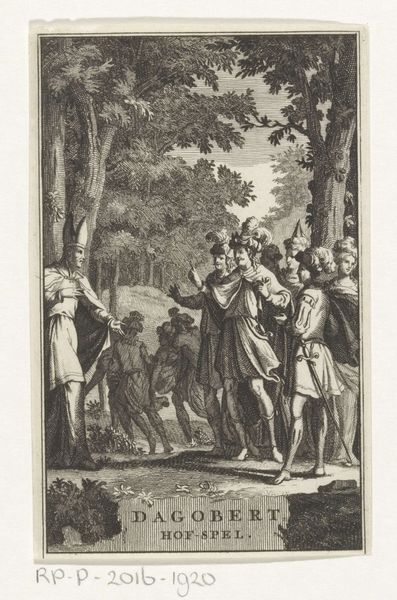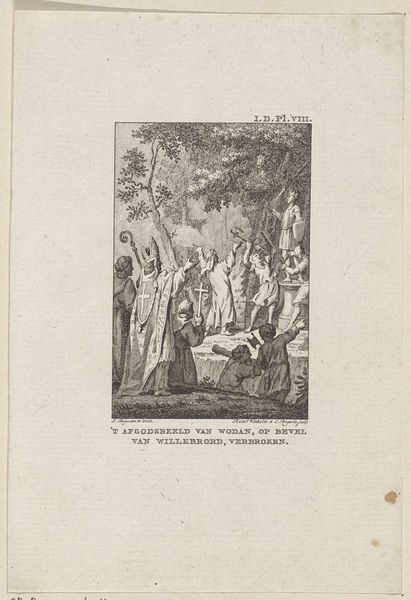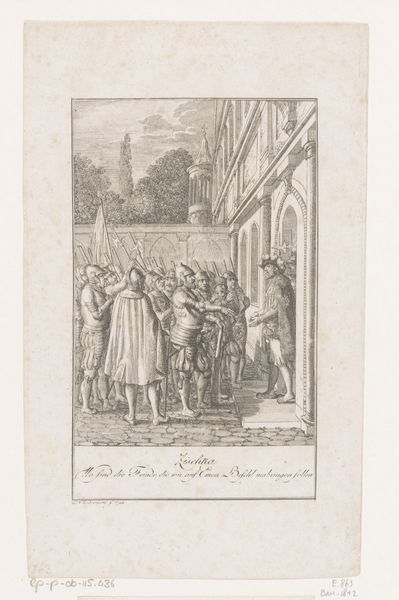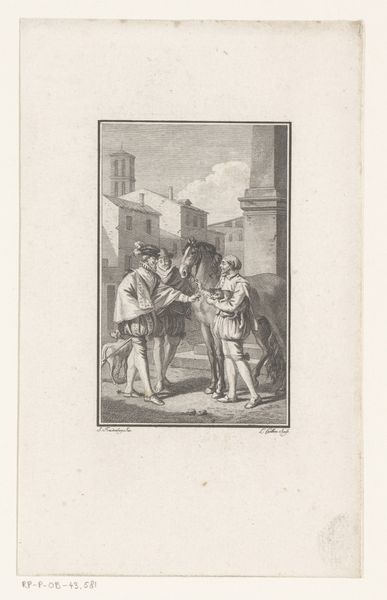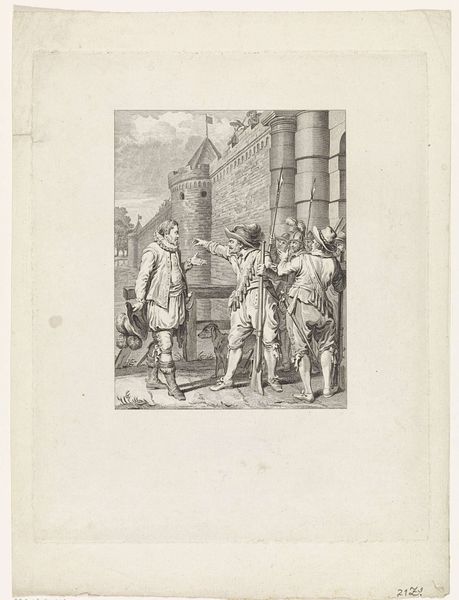
Coligny geeft opdracht om de aanslagpleger op te sporen 1799
0:00
0:00
danielnikolauschodowiecki
Rijksmuseum
drawing, print, paper, engraving
#
drawing
#
narrative-art
# print
#
figuration
#
paper
#
romanticism
#
history-painting
#
engraving
Dimensions: height 117 mm, width 82 mm
Copyright: Rijks Museum: Open Domain
Editor: So, this is "Coligny gives the order to search for the attacker," a print by Daniel Nikolaus Chodowiecki from 1799. The detail achieved with the engraving is fascinating, but I’m curious about its purpose. What should we make of this piece? Curator: From a materialist perspective, it's intriguing to consider this engraving not just as a representation of an historical event, but also as a commodity itself. Think about the labour involved in creating it. Engraving was a skilled craft, often tied to workshops and the print trade. How would this image have circulated? Who was the intended audience and what kind of social sphere did that create? Editor: I see… So it's about the accessibility of information, then? Was this a popular medium for spreading political or historical narratives at the time? Curator: Precisely! The relatively low cost of prints, compared to paintings, made information more widely accessible. But what story does this particular image tell, and for what purpose? The choice to depict this event—Coligny ordering the search—suggests a particular viewpoint being propagated through material culture. How does this differ from the accounts that might be shared via other material practices, such as tapestries? Editor: Tapestries being a richer medium… Were there specific workshops known for certain political views that dominated the printmaking landscape at the time? Curator: Exactly. Investigating the workshop where this print was made might give us clues about their socio-political stance, and therefore, the motivations behind disseminating this particular interpretation of events. Knowing what papers, inks, and tools they used gives some further understanding of production costs, market targets and the workshops' situation relative to others at that historical moment. Editor: That gives me a lot to think about. Thanks! Curator: It highlights how art can be understood not only aesthetically, but as a product embedded in a complex network of social and material relations.
Comments
No comments
Be the first to comment and join the conversation on the ultimate creative platform.
